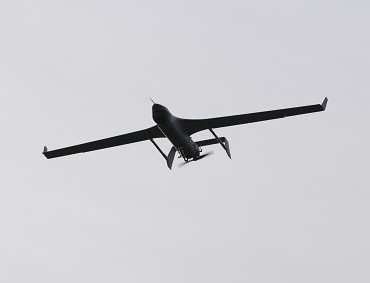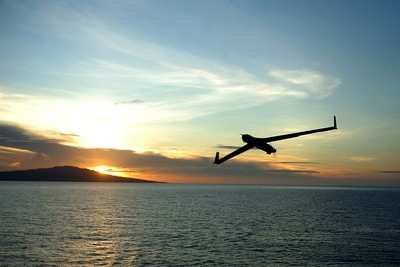Mon, Feb 08, 2010
Test Showed A 40 Percent Endurance Improvement
Insitu said Tuesday it has successfully flight-tested an
electronic fuel injection (EFI) heavy fuel engine (HFE) on its
Integrator unmanned aircraft. This technology is being incorporated
into Insitu's entire family of unmanned aircraft systems (UAS)
enhancing overall mission performance, especially in extreme
temperatures and at high altitudes, including mountainous
terrain.

Insitu Integrator
"We have now demonstrated HFE/EFI engine performance on both of
our Insitu unmanned aircraft, ScanEagle and Integrator. Our team
continues to focus on providing the best capabilities for our
commercial and military customers. This is yet another critical
enabling technology demonstrated in support of our STUAS (small
tactical unmanned aircraft system)/Tier II effort," said Vice
President of Emerging Programs Bill Clark. "Heavy fuel with
electronic fuel injection provides a 40 percent improvement in
mission endurance over the previously demonstrated capability. It
represents the next generation of our HFE technology, providing a
more reliable, safer and easier to operate and maintain engine, and
positions us well for our initial deployments later this year."
Integrator continues to demonstrate key capabilities such as a
communications relay payload, which enables mobile ground units to
exchange secure voice and data where line-of-sight obstructions
exist, and a ROVER 4 and ROVER 5 compatible encrypted digital data
link, allowing ground forces to securely view real-time data
streams on small laptop devices. The company also demonstrated a
runway-independent launch and recovery system for its entire family
of UAS, reducing the overall operational footprint and total
ownership costs.
The mature design of the Integrator evolved from ScanEagle-the
field-proven UAS serving in theater for more than five years.
Building from this strong foundation, Integrator provides expanded
plug-and-play payload capacity and a modular design. Integrator can
fly multiple mission payloads simultaneously, providing
high-quality information to forces on land and at sea.

Insitu Insight
Insitu's ScanEagle HFE recently logged more than 3,800
operational flight hours meeting the system safety and logistics
requirements aboard maritime vessels, while increasing system
endurance. The HFE technology was a critical requirement of the
U.S. Navy when deciding to place Insitu UAS on DDG-class ships.
More News
Circle To Runway (Runway Number) Used by ATC to inform the pilot that he/she must circle to land because the runway in use is other than the runway aligned with the instrument appr>[...]
Aero Linx: National Aviation Safety Foundation (NASF) The National Aviation Safety Foundation is a support group whose objective is to enhance aviation safety through educational p>[...]
At Altitude Of About 250-300 Ft Agl, The Airplane Experienced A Total Loss Of Engine Power On November 6, 2024, at 1600 central standard time, a De Havilland DHC-1, N420TD, was inv>[...]
From 2009 (YouTube Edition): Three Hour Flight Was 'Flawless' -- At Least, Until Mother Nature Intervened For anyone who loves the aviation business, this was a VERY good day. Afte>[...]
Also: AMA Names Tyler Dobbs, More Falcon 9 Ops, Firefly Launch Unsuccessful, Autonomous F-16s The Air Force has begun ground testing a future uncrewed jet design in a milestone tow>[...]
 ANN's Daily Aero-Term (05.05.25): Circle To Runway (Runway Number)
ANN's Daily Aero-Term (05.05.25): Circle To Runway (Runway Number) ANN's Daily Aero-Linx (05.05.25)
ANN's Daily Aero-Linx (05.05.25) NTSB Prelim: De Havilland DHC-1
NTSB Prelim: De Havilland DHC-1 Classic Aero-TV: The Boeing Dreamliner -- Historic First Flight Coverage
Classic Aero-TV: The Boeing Dreamliner -- Historic First Flight Coverage Airborne-NextGen 05.06.25: AF Uncrewed Fighters, Drones v Planes, Joby Crew Test
Airborne-NextGen 05.06.25: AF Uncrewed Fighters, Drones v Planes, Joby Crew Test




